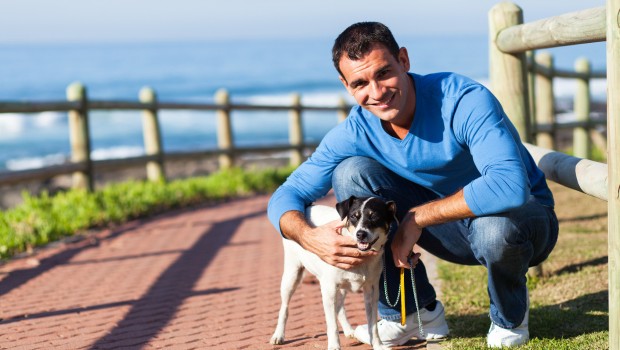Never Use This Equipment When Leash Training Puppy
What could be more adorable than a tiny 10-week-old German Retriever walking down the street with its owner, pulling at the leash as it excitedly greets anyone who walks by? These little puppies put so much effort into seeing what’s going on and are almost always greeted with a pat on the head and a smile from passing strangers.
This is all cute and adoring, that is until the dog reaches a bodyweight of 50 to 60 pounds and is literally dragging its owner down the street on the leash. The once happily smiling owner is now gritting her teeth and doing all she can to keep the dog from pulling her down the sidewalk.
As strangers pass by it takes all of the owner’s muscle and might just hold the dog back from getting its dirty paws all over these people. Eventually, these types of dogs who have no leash control end up spending all of their time in the backyard without ever being walked.
Leash Training Should Begin Immediately
Many dog owners who purchase a new puppy totally underestimate just how vital it is to invest time into leash training, and from as early an age as possible, especially when they have a pup that will grow 6 to 10 times its puppy size. They do not realize that training begins the instant their new dog comes home.
Any and all behaviors puppy practices will become a learned subconscious activity. In time the dog will not think twice about what it is doing, even though it may be a wrong action that you disapprove of. In all fairness to the puppy, what do you expect if you ignore sound training principles early in its life? What choice does the dog have?
The Importance Of Having The Proper Leash
Having the right type of equipment can make or break dog training. Using the proper tools can either make your training experience pleasant and productive or a complete waste of time.
What is the best leash for training purposes?
Fortunately, when it comes to leash equipment, you can’t go wrong with most of them. However, there is one type of leash that is not recommended for training purposes and that is the retractable kind.
Retractable leashes are available in all sizes and extend at different lengths. These leash devices are simply a plastic casing that fits into your hand which has a control trigger that either releases the leash to extend up to a certain length and can then be locked at the specific distance you choose.
You also need to keep a very short distance between you and your dog, which is very hard to do when using a retractable leash. With too much distance, your dog will have no concept that you are even walking with him.
Lastly, you must have consistent leash pressure and release moments in order for the dog to understand the commands you are teaching him, such as heeling. With a retractable leash, it can extend at different distances and be locked inconsistently. Your puppy may become frustrated as it perceives unfair and irregular corrections each time you vary the length and lock it in place.






